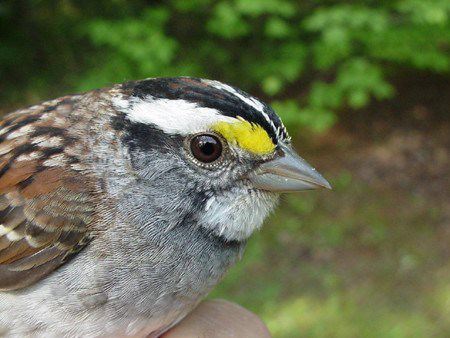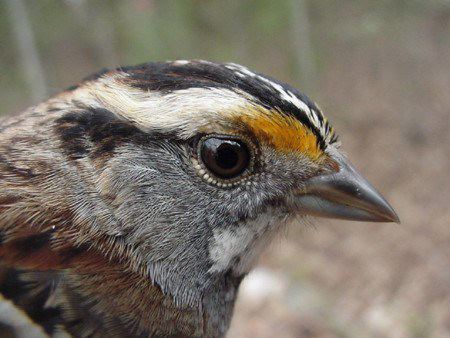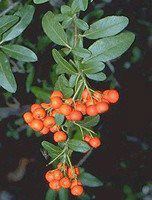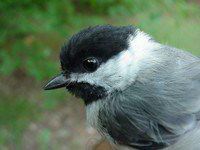|
|
|||
|
THIS WEEK at HILTON POND |
|
As the month that immediately follows the gluttonous holidays of Thanksgiving and Christmas, January is reportedly when more people go on diets than any other time of the year. Although we don't turn into hams or turkeys or stuffing or pie, we are "what we eat," and almost everyone puts on a few pounds when tempted by a succession of holiday feasts.  All photos © Hilton Pond Center In nature, "you are what you eat" also applies, as indicated by the capture of an unusual White-throated Sparrow at Hilton Pond Center. Named for their most prominent field mark, white-throats have several other plumage characteristics--including a bright yellow spot between the eye and base of the beak. (This area, called the "lores," is shown in the photo above.) Young white-throats, and some that are in non-breeding plumage, may have dull-colored lores, but most have yellow that is bright enough to be seen easily through binoculars. At Hilton Pond Center, we've banded 1,471 White-throated Sparrows since 1982, and all of them have had lores that were varying degrees of yellow. That's why the ORANGE lores on the bird below were particularly noticeable.  To some eyes, this difference in hue might be inconsequential, but it raises an interesting question. Since yellow (and orange) colors in birds are derived from pigments in plant seeds and other vegetation they eat, was it something different this bird ingested that made its lores orange instead of yellow?
So the question becomes: Did the aberrant White-throated Sparrow banded at Hilton Pond Center also sample some Pyracantha berries when its own feathers were developing? We'll never know for sure, of course, but it will be interesting to see in coming years if the ratio of orange-lores to yellow-lores increases from the current 1 in 1,471. If you enjoy "This Week at Hilton Pond," please help Support Hilton Pond Center for Piedmont Natural History |

 In recent years, ornithologists have noticed that Cedar Waxwings--which have bright yellow tail tips about the same shade as the normal lores of a White-throated Sparrow--sometimes have orange coloration instead. It's speculated that the waxwings have taken a liking to the orange-red berries of Pyracantha, or Scarlet Firethorn (Pyracantha coccinea), a non-native ornamental shrub that has become very popular in North America in recent years. There's further speculation that pigments in Pyracantha berries--if consumed when pigments are being laid down in new feathers--will cause a waxwing's tail tips to vary from their normal yellow.
In recent years, ornithologists have noticed that Cedar Waxwings--which have bright yellow tail tips about the same shade as the normal lores of a White-throated Sparrow--sometimes have orange coloration instead. It's speculated that the waxwings have taken a liking to the orange-red berries of Pyracantha, or Scarlet Firethorn (Pyracantha coccinea), a non-native ornamental shrub that has become very popular in North America in recent years. There's further speculation that pigments in Pyracantha berries--if consumed when pigments are being laid down in new feathers--will cause a waxwing's tail tips to vary from their normal yellow.

